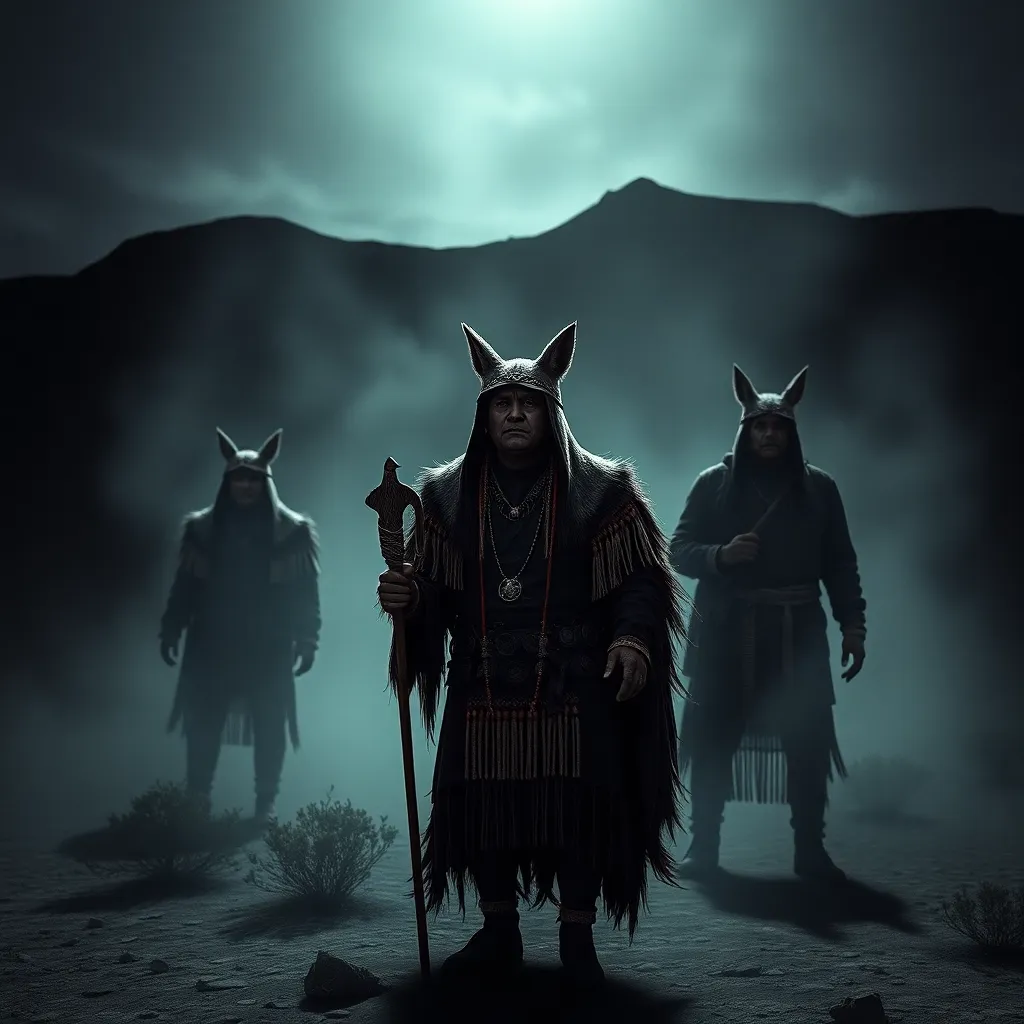Beyond the Coyote’s Howl: Unveiling the Truth Behind Navajo Shapeshifters
I. Introduction
The Navajo Nation, rich in tradition and cultural depth, is home to a myriad of stories that reflect the intricate relationship between humans, nature, and the spiritual world. Central to this tapestry of beliefs is the concept of shapeshifting, which plays a pivotal role in Navajo mythology. Shapeshifting is not merely a fantastical notion; it carries profound significance within the Navajo worldview, embodying themes of transformation, morality, and the interconnectedness of all beings.
This article aims to delve into the truths and myths surrounding Navajo shapeshifters, exploring their origins, cultural significance, and the modern interpretations that often distort these age-old beliefs.
II. The Origins of Shapeshifting in Navajo Lore
Shapeshifting has deep roots in Native American traditions, with each tribe possessing its own unique iterations of this phenomenon. In Navajo lore, it is intertwined with the stories of deities, heroes, and the natural world.
Key figures such as Changing Woman, who embodies the cycles of life and nature, and Coyote, the trickster, are central to understanding shapeshifting. Coyote, in particular, is known for his ability to transform and bend the rules of nature, often teaching important lessons through his antics.
A. Historical Context of Shapeshifting in Native American Traditions
Many Native American cultures view shapeshifting as a means of bridging the human and animal worlds. It often symbolizes a deeper understanding of one’s place in the cosmos and the fluidity of existence.
B. Key Figures and Deities Associated with Shapeshifting in Navajo Mythology
- Changing Woman: Represents life and fertility, often associated with the seasons and the earth.
- Coyote: The trickster figure who can take on various forms, often leading to lessons learned through his mischief.
C. The Role of Coyote as a Trickster in Navajo Stories
Coyote’s shapeshifting abilities serve as a narrative device to address moral lessons, teaching the importance of humility, wisdom, and the consequences of one’s actions. His stories resonate with humor and depth, making him a beloved character in Navajo folklore.
III. Understanding the Concept of Skinwalkers
One of the most misunderstood aspects of Navajo shapeshifting revolves around the concept of skinwalkers. Unlike other shapeshifters, skinwalkers are often seen in a negative light within Navajo culture.
A. Definition and Characteristics of Skinwalkers in Navajo Belief
Skinwalkers, or yee naaldlooshii, are believed to be individuals who have gained the ability to transform into various animals, often through malevolent means. They are associated with witchcraft and are feared in Navajo communities.
B. Distinction Between Skinwalkers and Other Shapeshifters
While many shapeshifters are seen as benevolent or neutral, skinwalkers evoke feelings of fear and caution. This distinction highlights the moral and ethical implications of shapeshifting in Navajo belief systems.
C. Cultural Significance of Skinwalkers: Fear, Respect, and Taboo
Skinwalkers represent the darker aspects of human nature and the potential for corruption. Their existence is often shrouded in taboo, with discussions about them approached with great caution and respect.
IV. The Symbolism of Animals in Navajo Shapeshifting
Animals play a crucial role in Navajo shapeshifting narratives, often symbolizing different traits, powers, and spiritual meanings.
A. Common Animals Associated with Shapeshifting
- Coyote: Represents cunning and adaptability.
- Wolf: Symbolizes loyalty and teamwork.
- Bear: Embodies strength and courage.
B. The Spiritual Meanings Attributed to These Animals
Each animal carries its own set of teachings and spiritual insights, reflecting the values and beliefs of the Navajo people. The connection to these creatures emphasizes the importance of nature in understanding oneself and the world.
C. The Connection Between Humans and Animals in Navajo Spirituality
The Navajo worldview sees humans and animals as interconnected. This relationship is celebrated through stories, rituals, and practices that honor the spirit of the animal and its role in the greater cycle of life.
V. Modern Interpretations and Misconceptions
In contemporary society, the concept of Navajo shapeshifting has been sensationalized and often misrepresented in popular culture. From movies to television shows, the portrayal of shapeshifters rarely captures the true essence of Navajo beliefs.
A. Popular Culture Representations of Navajo Shapeshifters
Media often depicts shapeshifters as malevolent beings, reinforcing stereotypes that lack nuance and cultural understanding.
B. The Impact of Media on the Perception of Navajo Beliefs
This skewed portrayal can lead to misunderstanding and disrespect towards Navajo traditions, highlighting the need for more accurate representations and education about indigenous cultures.
C. Addressing Common Myths Versus the Truth: What is Often Misunderstood?
It is essential to differentiate between the mythologized versions of shapeshifting and the actual beliefs held by the Navajo people. Common misconceptions include the idea that all shapeshifters are evil or that shapeshifting is merely a form of entertainment rather than a deeply rooted cultural belief.
VI. The Role of Shapeshifting in Navajo Healing Practices
Beyond folklore, shapeshifting plays a significant role in Navajo healing practices, where it serves as a metaphor for transformation and renewal.
A. Shapeshifting as a Metaphor for Transformation and Healing
The ability to change form symbolizes the possibility of personal transformation, healing from trauma, and the cyclical nature of life.
B. The Use of Rituals Involving Shapeshifting in Traditional Medicine
Traditional healers often incorporate elements of shapeshifting into their practices, using rituals that invoke animal spirits for guidance and healing.
C. Personal Accounts and Testimonies from Navajo Healers
Many Navajo healers share experiences of transformation that have led to profound insights and healing for themselves and their communities, illustrating the deep connection between shapeshifting and well-being.
VII. Shapeshifting in Contemporary Navajo Society
In modern Navajo society, the concept of shapeshifting remains relevant, acting as a touchstone for identity and cultural continuity.
A. The Relevance of Shapeshifting in Modern Navajo Identity
Shapeshifting narratives are interwoven with contemporary issues, reflecting the struggles and resilience of the Navajo people today.
B. Community Perspectives on Shapeshifting and Its Implications
Within the community, there are diverse views on shapeshifting, with some embracing its teachings while others remain cautious due to its associations with skinwalkers.
C. The Future of Shapeshifting Narratives in a Changing Cultural Landscape
As the Navajo Nation navigates modern challenges, the stories of shapeshifting may evolve, reaffirming their significance in an ever-changing world.



